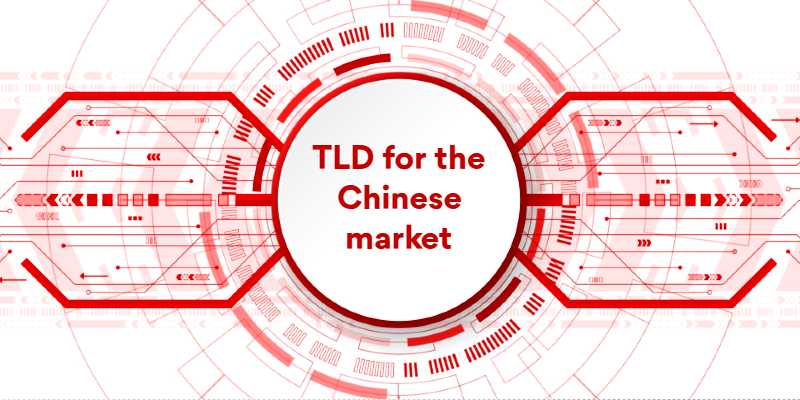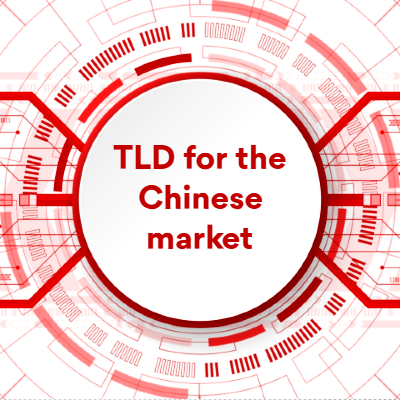


Top-Level Domains (TLDs) for the Chinese market
TLD, Name Services(NS) and Domain Name Service (DNS) terms
There are two main parts to a domain name you need to consider when making a purchase: -
- TLD (Top Level Domain) is the part of the domain name that comes after the "DOT", e.g. .com, .net, .etc.
- Domain is that comes before the TLD. ", e.g. "mydomain" in mydomain.com
- The Domain name is the domain + TLD., e.g. mydomain.com
NS vs DNS;
- Name server (NS): A server available on the Internet hosting the Domain Names Service (DNS)
- Domain Name Service (DNS) – Database containing your DNS records, e.g., IP address of your website.
TLD for the Chinese market summary
Do not use Chinese TLDs, i.e. CN. COM.CN, GOV.CN, etc.
In 2022, the Chinese authorities changed the ownership rules.
- Only Chinese companies and citizens can own Chinese TLDs.
- Overseas companies can purchase a domain in China, allowing the use of Chinese national name services.
Chinese search engines give priority to traditional TLDs such as. COM,. NET.CO, etc.
Our recommendation, used by Chinese businesses, is to add the country code CN to your current domain name and TLD, COM or.CO, i.e. mydomaincn.com or mydomaincn.co
Having a domain name purchase in China greatly increases internet performance in China and with the local search engines.
For more information, please see: Domain names for the Chinese market
Top-level domains (TLDs) types
TLDs are in three groups as follows;
Country Code Top-Level ccTLDs
- These are two-letter TLDs assigned to specific countries or territories, such as .uk (United Kingdom), .cn (China), and .de (Germany).
- Managed by local authorities or organisations specific to the country or territory.
- Today, most countries want these ccTLDs to be used by businesses and residents of their country, and China is no exception.
Sponsored gTLDs (sTLDs)
- These TLDs have a sponsor representing a specific community, industry, or sector.
- Example: .edu (for U.S. educational institutions), .gov (for U.S. government entities), .museum (for museums).
- Sponsors set policies and manage registrations for their specific communities.
Unsponsored gTLDs (uTLDs)
- These are generic TLDs managed by registries accredited by ICANN and open to general public use.
- Example: .com, .net, .org, .xyz, .online, .info.
- No specific community or restrictions—available for commercial or personal use.
Within these groups, there are also second-level country-code top-level domains (ccTLDs). Here are some examples for .cn:
- .com.cn – This is for commercial entities similar to .com but specifically for businesses operating in China.
- .net.cn – For network-related organisations similar to .net.
- .org.cn – For non-profit organisations or entities similar to .org.
- .gov.cn – For government institutions in China.
- .edu.cn – For educational institutions in China.
- .mil.cn – For military organisations in China.
Again, most countries want these ccTLDs to be used by businesses and residents of their country, and China is no exception.
Traditionally, the commonly used TLDs in China are;
- .com
- .cn
- .com.cn (original Chinese TLD)
For a while now, you can register International Domain names (IDN) in different language characters, e.g., Russian, Arabic, Simplified Chinese, Traditional Chinese, etc.
In the case of Chinese characters, there are Chinese ccTLDs available, e.g.;
- .中国 is.CN in Simplified Chinese
- .中國 is.CN in Traditional Chinese (Cantonese / Taiwanese)
- .公司 is.COM in Simplified Chinese
- .网络 is .NET in Simplified Chinese
Some of the TLDs are ccTLDs and are supplied and managed by the Chinese authorities.
The domain can also be in the Chinese language, e.g., 我的域.com (“mydomain” in Chinese). You can purchase a domain in Chinese from any domain supplier supporting the Chinese language. The authorities manage the TLD.
Examples;
- mydomain.com (standard English domain name format)
- mydomain.cn (standard English domain name format)
- mydomain.com.cn (standard English domain name format)
- 我的域名.com (domain format in the Chinese language)
- 我的域名.cn (domain format in the Chinese language)
- mydomain.中国 (TLD in the Chinese language)
- 我的域名.中国 (TLD and domain in the Chinese language)
Having shown that you can use the Chinese language in domains and TLDs, I would not recommend it. Its use is limited; only people who can write Chinese on a mobile device or tablet can use the domain name.
Chinese ccTLDs management
The management of the Chinese ccTLD is the responsibility of the Chinese authorities.
In 2013, Chinese authorities fully automated the purchasing of Chinese domain names. While many international domain suppliers offer Chinese country-code top-level domains (ccTLDs), a licensed Chinese supplier is typically involved in the background when purchasing a Chinese ccTLD. Please note that only an authorised Chinese business can register a Chinese ccTLD.
In 2022, Chinese authorities will only allow Chinese companies to own Chinese TLDs. This did not affect Chinese domain ownership at this stage, given that Chinese business agents only own the Chinese TLDs. The problem today is that if you use the Chinese TLD for overseas business, the Chinese authorities can close the domain name.
The Chinese authorities apply the Chinese Internet Content Provider (ICP) rules and regulations if you use the domain name to publish inside China. When writing this paper, the ICP rules and regulations do not apply if you use Chinese ccTLDs outside China.
The Chinese authorities could stop using a Chinese domain name if they wish. Therefore, we recommend that you refrain from publishing inappropriate materials for the Chinese market.
Brand registration checks
We always recommend that you register the company trademarks and brand name(s), in this case, in China.
When publishing a domain name in China, the local authorities will check the Chinese brand registration database to ensure that your domain name is not a registered brand. If it is, regardless of your domain name ownership, you will not be allowed to use this domain name in China. You can still use the Chinese TLD name outside China.
Access to China domain name services to get you started in China
Access to China's local Chinese name servers
Web page last modified: V3.4 - September 2025



